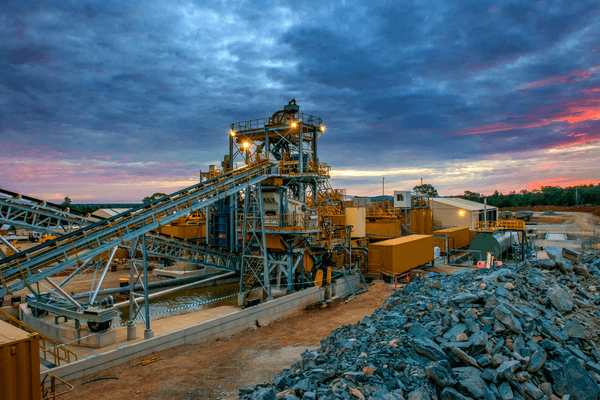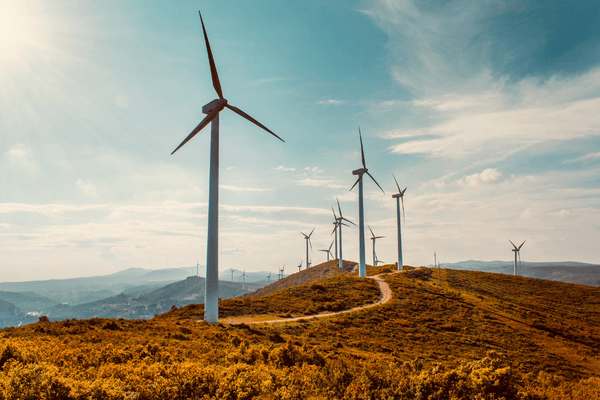Power stations
In 1821, English scientist Michael Faraday discovered how to make an electrical current. He found that when a magnet spins inside a coil of copper wire, tiny electrical currents flow through the wire, creating an electrical charge.
Today, we use a similar approach to Faraday's, but the electricity we use in our homes is generated on a much larger scale, inside power stations, using fan-like machines called turbines.
Most power stations use fossil fuels to generate electricity. Power stations will burn non-renewable fossil fuels including coal, oil, or gas to generate steam to drive the large turbines that, in turn, produce electricity.
Fossil fuels were formed in the earth's crust millions of years ago. They are non-renewable, meaning there is a finite amount available, and they will eventually run out.
The energy industry is evolving, and is moving towards cleaner and greener alternatives for energy such as like solar, hydro, and wind power, which are all renewable energy sources.
How are fossil fuels used for energy?
Fossil fuels are the remains of plants and animals which have settled at the bottom of lakes and oceans, covered by sand and mud. Over millions of years, the earth's pressure and heat have turned the layers of earth into either a hard rock-like substance called coal, a thick liquid called petroleum, or an invisible substance called natural gas.
To start converting fossil fuels into electricity, these substances need to be taken out of the ground. Coal mines bring the coal up from underground, while massive drills collect oil and gas.
Coal
Coal produces around 64% of the world's electricity, with the remainder coming from water, gas, nuclear and green sources. Most developed countries rely heavily on coal for power.
Once the coal has been mined from the ground, it is transported to power plants. Many of Australia's power plants are located close to coal mines, meaning transportation is limited.
Coal is a non-renewable resource (meaning it will eventually run out), so it’s important we preserve it and look for more environmentally friendly ways of producing electricity for the future.
Oil
If oil is being used for power, it usually arrives first in big tanker ships before being transported to a power plant along huge pipelines.
Renewable energy sources
The process of creating electricity is the same in most cases - a turbine is used to create the energy. A turbine spins like a fan, converting the energy from water, wind or steam, into mechanical power, and there are a number of ways to make a turbine spin.
Hydro
In Australia, another way to make electricity is with hydro power which uses water stored in huge dams. The energy created by the water released from these dams is transformed into electricity by hydro-electric turbines and generators.
To make hydroelectric power, water from rain or melting snow is collected and stored in a dam. The flow of this water can be controlled with the opening and closing of the gates or pipes. A dam wall can also create a high water level, which creates more force when the water drops towards the turbine.
A large pipe carries the water from the dam to the turbine and the force of the water pushes against the blades and turns the turbines. The rotating turbine is connected to a generator, which makes the electricity.
One of Australia’s well known sources of hydroelectric power is the Snowy Mountains Hydro-Electric Scheme.
Wind
In Australia, one of the cheapest sources of large-scale renewable energy is wind power. Electricity is generated from the power of the wind, and turbines capture this energy by the sweeping of their blades. The spinning of the blades drives an electrical generator, which in turn can be used to produce electricity.
In 2020, wind power accounted for 9.9% of Australia’s electricity. According to the Clean Energy Council the top 3 plants by size are located in:
- Macarthur, Victoria
- Sapphire, New South Wales
- Snowtown, South Australia
Solar
Solar photovoltaic (PV) panels capture the energy from the sun. The panels work by converting sunlight into electricity as a result of specially fabricated semiconductor crystals. As its name suggests, solar relies on the sun, meaning electricity can't be generated without it. Luckily, with Australia being one of the sunniest continents in the world, creating energy using solar in Australia is a great solution considering the climate. In 2020, solar accounted for 6.5% of total electricity generated in Australia.
Almost 3 million homes across the country have solar panels, that’s around one in every four homes!



